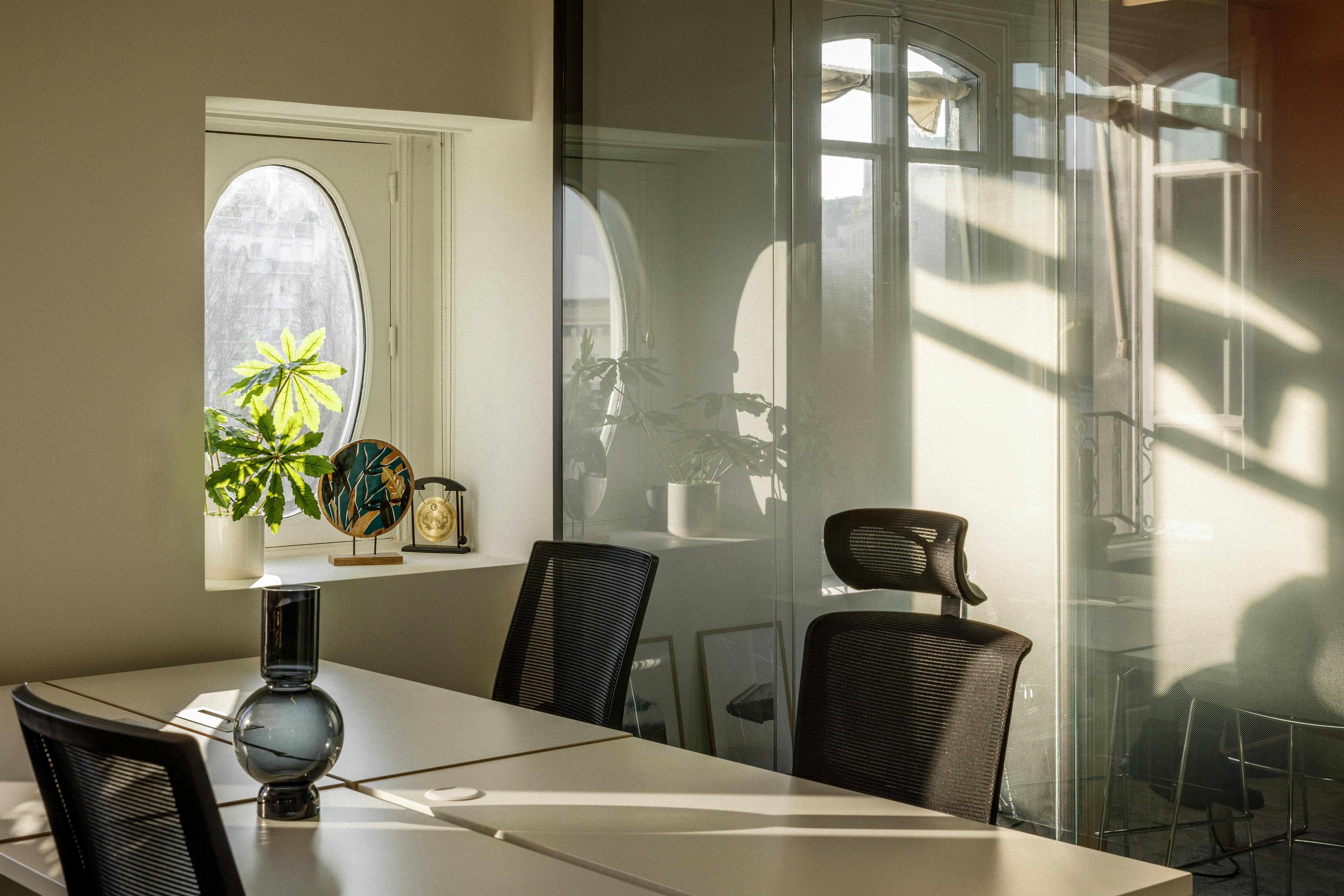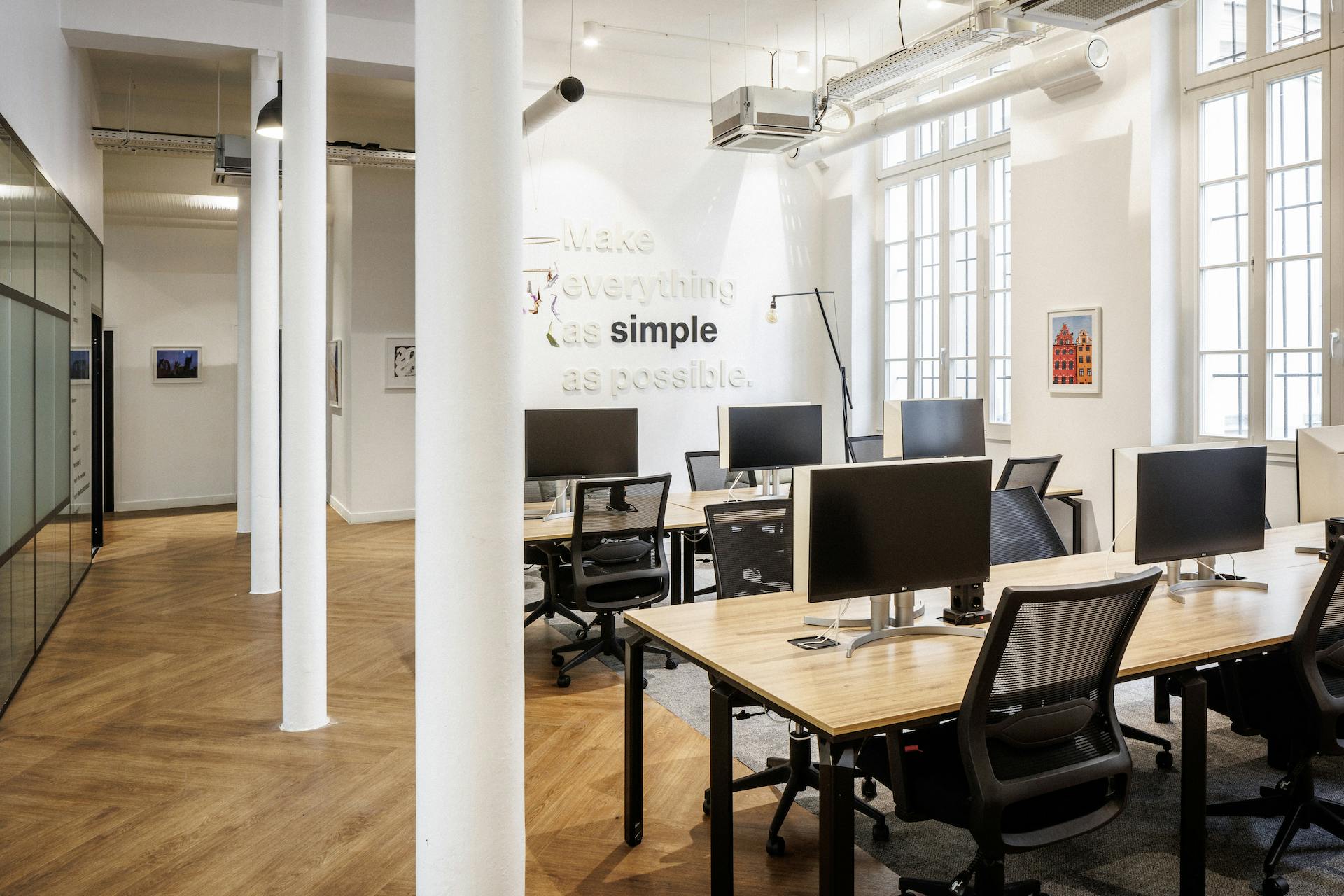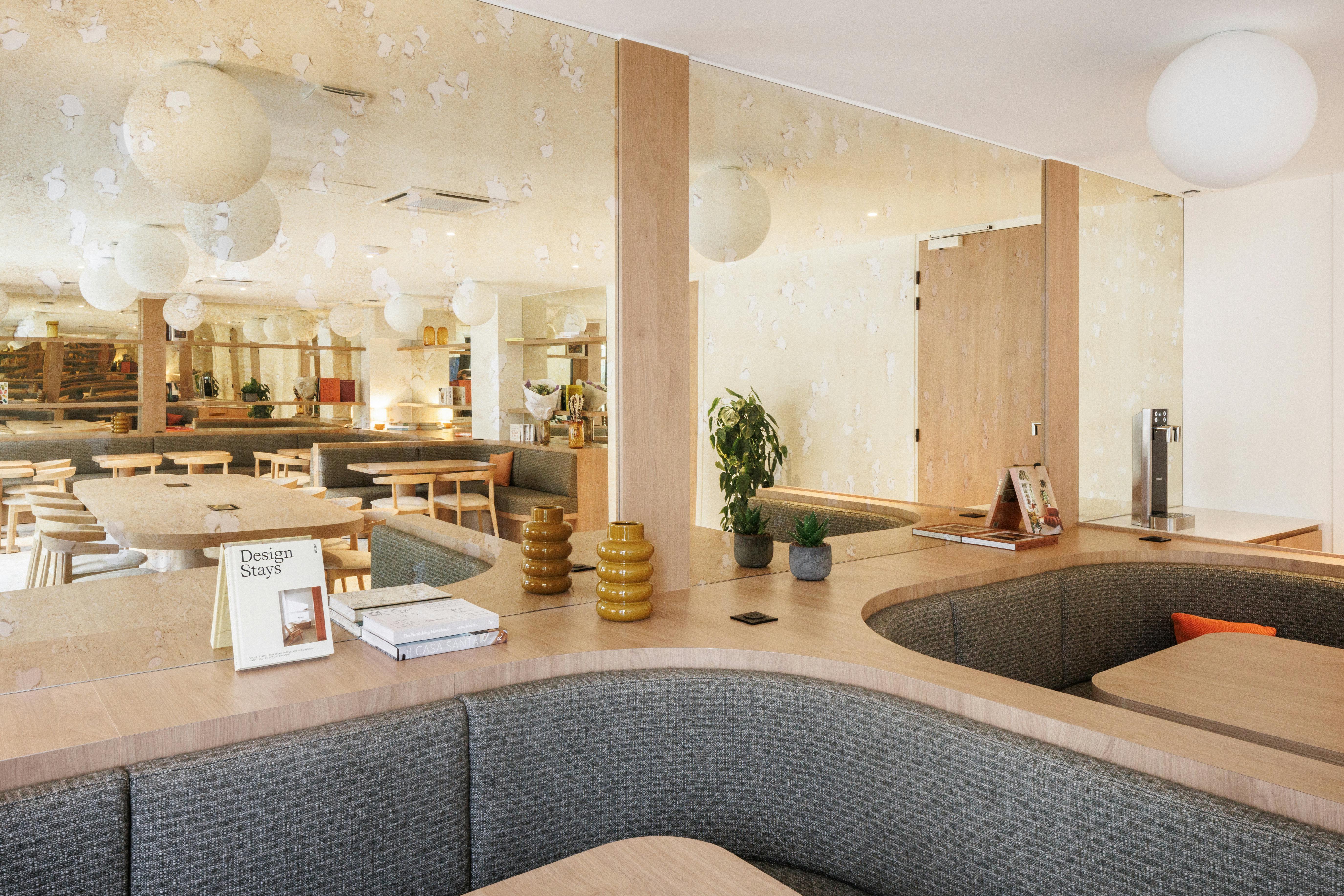

Keys to organizing your desk and boosting your productivity
A well-organized and optimized workspace is the key to optimal productivity. Unfortunately, amidst the piles of accumulating files, meetings, and ambient chaos, it can sometimes be difficult to keep your desk in order. Thankfully, there are simple solutions to transform your work environment into a conducive space for productivity.
Do you want to organize your workspace to boost your productivity? Deskeo is here for you and will provide you with all the keys to optimize your workspace and increase efficiency.
Definition of the ideal workspace
The ideal workspace is primarily defined by its optimization. It must be perfectly organized and offer all the necessary solutions to adapt to your habits and work pace.
What is an organized workspace?
An organized workspace is an environment where everything has its place.
- The desk should be clear and airy, without accumulation of piles of documents or objects.
- You should have storage solutions such as drawers, shelves, and cabinets to store your belongings and easily find what you need.
- Documents should be sorted by projects in clearly labeled folders.
- Office supplies such as pens, pencils, and staplers should be stored in pots or boxes.
- Finally, the space should be divided into different zones dedicated to active work, reading, meetings, etc.
Such office layout requires a bit of organization at the beginning but will clearly benefit you on a daily basis.
The importance of a well-organized workspace
It is true that tidying up and organizing your desk may seem like a daunting task. However, it proves beneficial in many ways because:
- A tidy workspace saves valuable time by avoiding losing concentration while searching for misplaced items under a pile of documents. This minimizes interruptions in the flow of thought that hinder productivity.
- Working in a harmonious, orderly, and stimulating environment has a positive effect on morale, motivation, and creativity. It frees the mind from the troubles and stress associated with ambient disorder and promotes concentration on complex tasks.
- A well-designed and organized workspace reflects a professional and credible image, whether to colleagues or clients. It is a sign of rigor and seriousness.
Therefore, even if the idea of a major cleanup does not necessarily delight you at the moment, it will be beneficial to you in the long run. Provided you respect a few basic principles...
Basic principles for a functional desk
Optimizing your workspace requires method. Therefore, if you want to organize your desk effectively, you will need to follow some basic principles.
Elimination of the Superfluous
The first step to a well-organized workspace is to sort out what you really need from what clutters you.
Start by taking out all the documents and objects from your desk.
Sort them into 3 categories:
- to keep,
- to throw away/give away,
- and to archive.
Get rid of what is unnecessary or obsolete (because, yes, we can accumulate many useless things...).
Archive everything you don't need immediately.
This way, you will save space and have a clearer view of what should remain on your workspace.
Organization by zones
Once your workspace is decluttered, you will need to establish zones tailored to your different activities:
- Active work zone: reserved for ongoing tasks requiring concentration.
- Reading zone: for documents to be consulted occasionally.
- Filing zone: for storing archives.
- Relaxation zone: a more informal space to relax.
This rational distribution will make you more efficient by assigning a precise place to each thing.
Once you have completed these two tasks, you will then need to implement storage techniques to ensure that your workspace remains well-organized over time.
4 storage and labeling techniques for a perfectly organized desk
To maintain the organization of your workspace over time, here are 4 essential techniques to implement:
- Object labeling
Giving a name and putting a label on boxes, binders, and other containers saves you valuable time because it allows you to immediately identify where something goes.
To do this, you need to:
- Use adhesive labels or name holders.
- Identify the content, category, and location.
- Have a consistent naming logic.
- Place the labels visibly.
This way, you will avoid mistakes and find immediately what you need.
- Storage of supplies in pots
Small things that are left lying around often end up causing a mess. Therefore, it is important to make sure to properly store your pens, scissors, paper clips, and other small supplies:
- Use pots, boxes, or small desk baskets.
- Use one container per type of supply.
- Limit their number on your workspace.
- Store the surplus in your filing zone.
By doing this, your pens and other supplies will always be within reach without clutter.
- Document classification according to use
Finally, it is important to always be able to find your way around your files. The best solution is to categorize your files into 3 categories:
- Current files: in your active zone.
- Archiving files: in your filing zone.
- Magazines, catalogs: in the reading zone.
With this method, there is no need to search for your things everywhere in your drawers; you know exactly where each document is located and won't waste hours trying to find a darned paper.
There you go, you think you're done with organizing your desk? Well, not quite, there is still an important element to organize: your computer. Because, yes, it is also part of your workspace.
- Use of digital tools for organizing your computer
Like your desk, your computer can quickly become a real mess if not properly organized and equipped with the right tools.
Therefore, you should not neglect it and you should carefully:
- Create folders and subfolders to organize your files,
- Make regular backups,
- Install work tracking software (Notion, Asana, etc.),
- Delete unnecessary and bulky items, etc.
There you go, now everything is organized. You just have to make sure that your workspace remains clean. And this will require a little daily work (but rest assured, it won't take you more than 5 minutes).
Daily maintenance of the workspace: a necessity for a always tidy desk
To maintain organization over time, regular maintenance of your desk is essential.
Every evening before leaving the office, remember to:
- Go around your desk and tidy up misplaced items.
- Throw away unnecessary papers and trash.
- Rearrange your piles of documents.
- Check the condition of your plants or other decorations.
This quick maintenance will allow you to start each morning on the right foot.
With these few tips, you should normally have a perfectly organized desk. But your desk is a space where you spend a lot of time. The fact that it is well organized and tidy is a good start but it is not enough. It also needs to be arranged to truly feel comfortable.
Space optimization: a real asset to boost Your performance and be more productive
To make the most of your workspace and be as productive as possible, you need to feel comfortable. And for that, you will need to equip it ergonomically and decorate it.
Choice of furniture and ergonomics
Poor posture at work can lead to various ailments and affect the quality of your work. To ensure that you work in the best possible conditions, you should pay attention to some details regarding your furniture:
- Choose a desk and chair adapted to your morphology.
- Position your screen at eye level and your chair at the right height.
- Provide a footrest if necessary.
With the right furniture, you will be perfectly set up and will be able to work in the best conditions. But why not further improve your workspace by adding your personal touch to personalize it?
Desk decor: Think about plants and lighting
Working in a dark and impersonal office does not really help to keep your spirits up on a daily basis. So, to feel good even when dealing with complicated files, consider surrounding yourself with elements that soothe you:
- Install plants in your office; they purify the air and reduce stress.
- Place your desk near a window to make the most of natural light.
- Vary the sources of light with desk lamps and dimmed lights.
- Play with reflectors and blinds to adjust the lighting.
A bright and green workspace will foster your well-being on a daily basis.
In short: Why and how to personalize your workspace?
In summary, you will have understood that personalizing your workspace has many benefits:
- It allows you to feel comfortable and at ease in your professional environment. A space that reflects you is conducive to your fulfillment.
- Personalization reinforces motivation and stimulates creativity by reflecting your identity and interests.
- Don't hesitate to invest in plants and decorative elements to personalize your workspace.

Contact Us
We find your Perfect fit!

